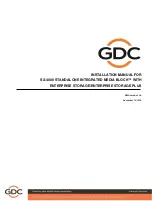
DO NOT STORE YOUR BOARD IN A BOARD
BAG FOR EXTENDED PERIODS OF TIME.
Board bags are intended for transportation protection, not full time storage.
Prolonged storage of a wet board in a wet board bag will have adverse effects on
the finish of your board, leading to the possibility of mold, and osmotic blisters.
Storing your board in a board bag is not the same as placing it in the shade. Board
bags will collect heat and potentially overheat your board.
RINSE SAND AND SALTWATER DEPOSITS
FROM YOUR BOARD AFTER USE.
Sun, sand and saltwater will degrade any man-made material over time. Rinse
off sand and saltwater deposits from your paddle board with fresh water and
store in a cool, dry environment after each use.
INSPECT YOUR BOARD FOR DINGS AND
CRACKS BEFORE AND AFTER EACH USE.
The polyurethane core of your board is highly absorbent and acts as a sponge
when the protective watertight shell is compromised. To prevent your board
from becoming waterlogged (heaviness and drag as a result of water absorption),
regularly inspect the exterior for dings and cracks. If you spot a crack in the
polyethylene shell, a kayak repair specialist will have greater success fixing your
SUP than a vendor specializing in surfboard/sup repair.
7
QUESTIONS | WARRANTY | PARTS & ACCESSORIES:
1-877-2LEVEL6
Summary of Contents for Ten-Ten HDPE
Page 1: ...OWNER S GUIDE...
Page 2: ...2...
Page 11: ...11 QUESTIONS WARRANTY PARTS ACCESSORIES 1 877 2LEVEL6 INFO LEVELSIX COM...
Page 12: ...www levelsix com...






























